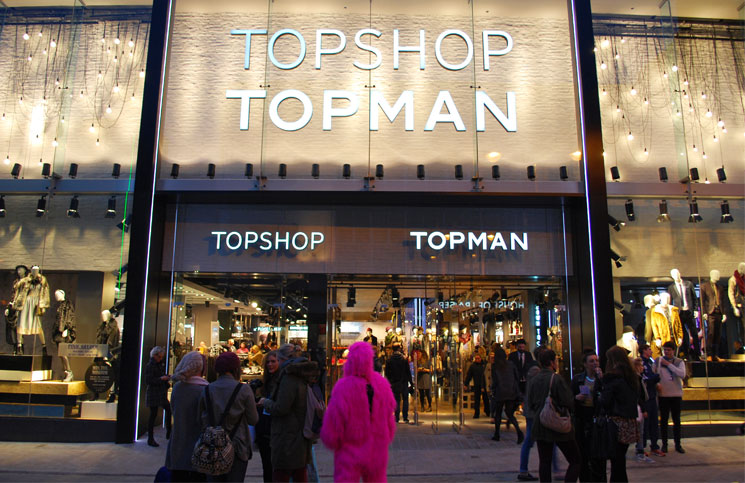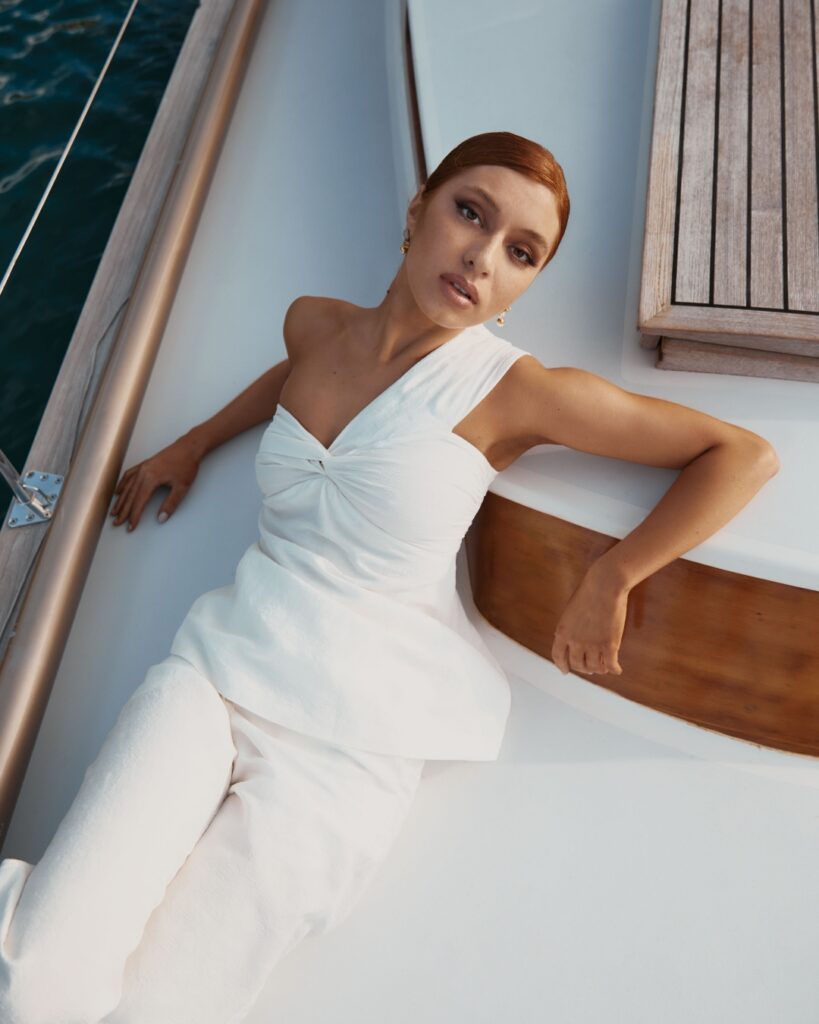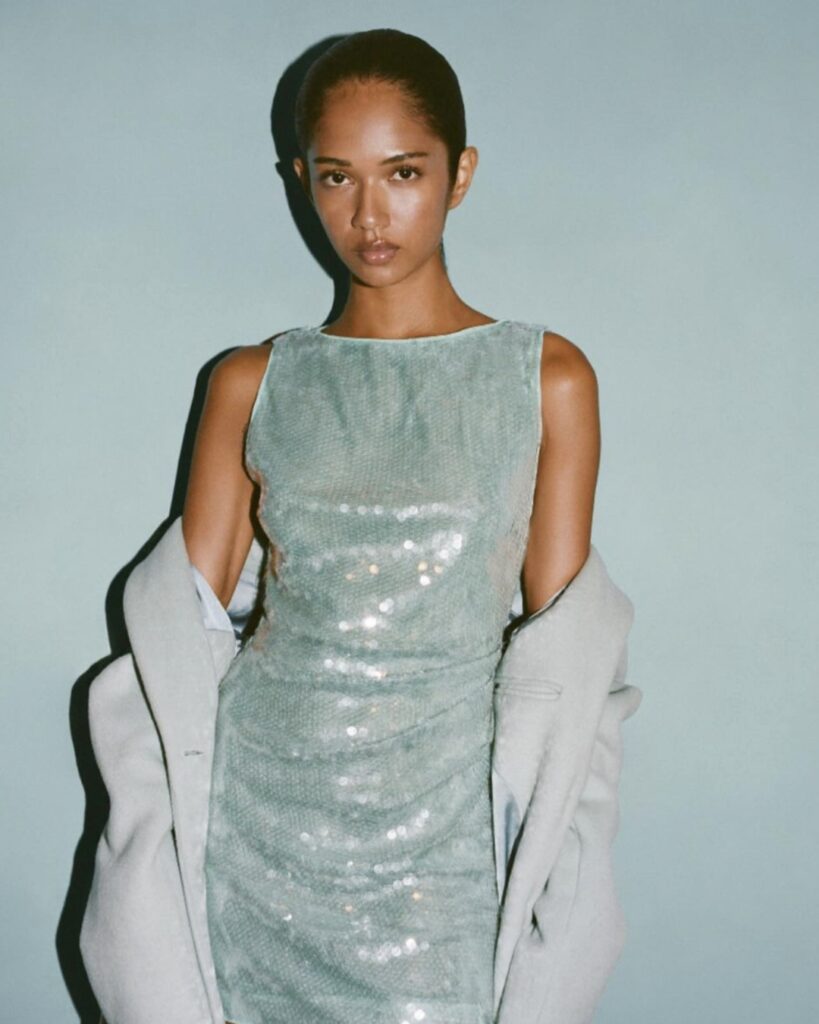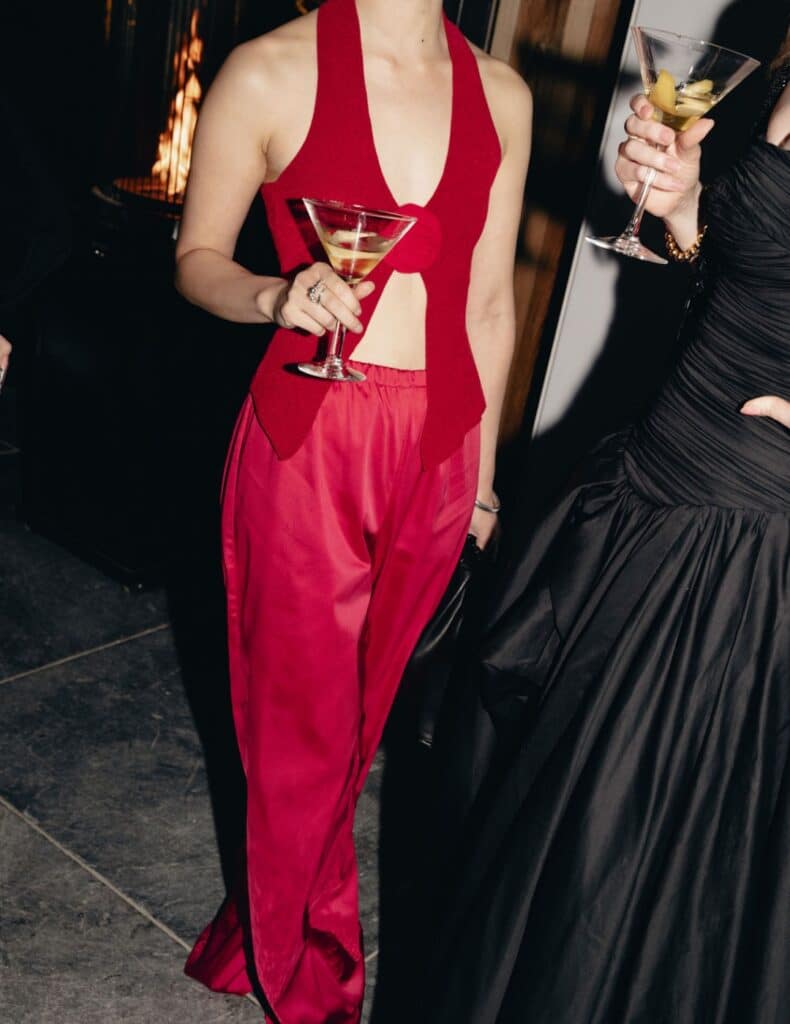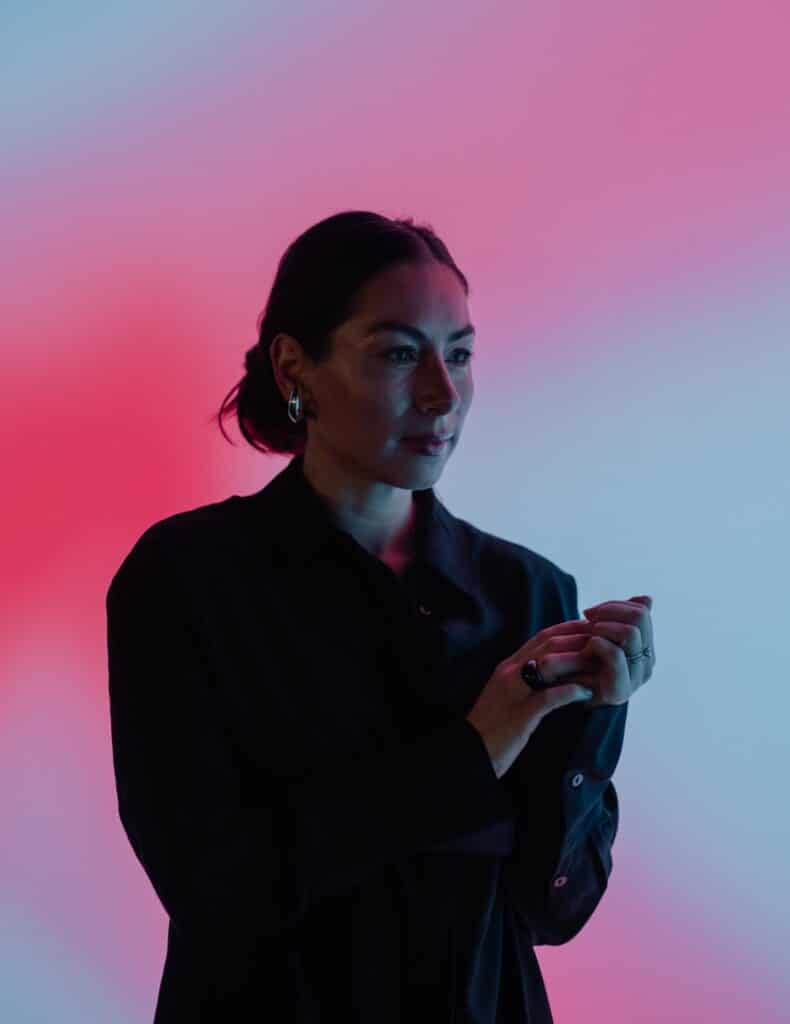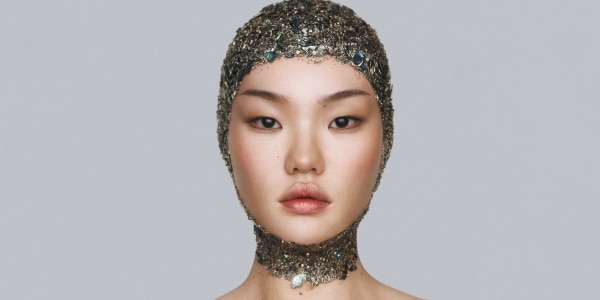As we counted down to Topshop opening here in New Zealand, Fiona Hawtin checked out the store on its home turf in London.
On a balmy London afternoon in autumn, a stone’s throw from the rather la-de-dah suburb of Fitzrovia, bass is reverberating at what feels like 6.3 on the Richter scale. It’s coming from just inside the entrance of Topshop’s flagship store on Oxford Street and the pretty young DJ is completely absorbed in her task. It falls on deaf ears though in this 8300 square metre store. The 200,000 customers that visit each week – that’s the entire population of Hamilton – are far too busy shopping to pause and take in her mixing and knob-twiddling skills. Fair enough too. Rails of new clothes are continuously rolled across the five floors and no one wants to miss any of it in this grand temple of high street fashion. In early March Auckland will have its very own cavernous 1000 square metre Topshop enticing us through its Queen Street doors. So, just how did the darling of the British high street scene find its way to little old New Zealand? Two people: Karen Walker and her husband Mikhail Gherman. They forged a relatinship with Topshop more than four years ago when Topshop asked them to be their wholesale partners here. “They’d researched New Zealand and considered The Department Store to be the best store here and the ideal home for them in this market,” Walker explains. “Soon after, we launched Topshop at The Department Store and Topman at The Men’s Department – also at The Department Store. Not long after that we started planning the full Topshop Topman retail stores here.”
Suddenly Bob’s your uncle and we’re about to have our very own Topshop. Actually, make that Uncle Phil, as Sir Philip Green, owner of the Arcadia Group (which holds a majority share in Topshop), is referred to by Kate Moss and Cara Delevingne. He does, indeed, seem very uncle-like. The day after my Topshop shopping spree I happened to be backstage after the Topshop Unique fashion show in an old garage in King’s Cross during London Fashion Week, when Sir Philip took a baby into his arms – the progeny of a long-time collaborator – and positively cooed over it. This is the man who, as of November 2014, was number 306 on the Forbes billionaires list with an estimated wealth of US$4.9 billion. Barely 30 minutes before, the man who also owns Miss Selfridge, BHS, Outfit and Dorothy Perkins, had been all business sitting front row watching the likes of Jourdan Dunn and Cara Delevingne walking in Topshop Unique’s spring/summer 15 collection of catwalk-worthy but eminently wearable fashion. Next to him was Anna Wintour and surrounding them Pixie Geldof, Alexa Chung, Poppy Delevingne and Downton Abbey’s Laura Carmichael. Unique, as you will soon learn, has a higher price point than Topshop mainline and is shown during London Fashion Week. “Unique is more Topshop design in its purest form, because we work to the same critical path as designers that show on the catwalk, so we’re formulating new ideas at the same time as designers,” says Topshop Unique’s head designer Emma Farrow, just ahead of the spring show.
Although she heads up the design team, she’s not head-to-toe in Topshop. Instead she’s wearing a Marni dress and an old man’s grey jumper, which covers her cute rabbit and bird tattoos. “I was going to wear something from the last collection but I thought a lot of people would be wearing it today.” She’s right. The space is heaving with Topshop pieces. There’s a team of just under 50 designers headed by Farrow and creative director Kate Phelan, who splits her time between Topshop and her other life as a contributing fashion editor on Vogue. For this range, British heritage and sportswear played a key part. “We’re inspired by the British seaside and faded glamour of ballrooms and dance. So it’s a blend of that, our famous seasides and dance dresses that take you from day to evening. We’re also looking at modern sportswear, so there’s that mix of the girl’s girl and the tomboy.”
The show was one of the hot tickets of the week. Topshop managing director Mary Homer tells me two days later that, yes, the show does have a great following but it is, in part, helped by the fact that “we are the only ones that do food”.“Journalists love coming to our show because they get fed. And when you’re running from show to show and you’re trying to grab a coffee and something to eat they know they can get fed at Topshop.” With a menu that includes Devon crab doughnuts, tofu with baby leek and soba noodles and designer meringues from foodie darlings the Meringue Girls (one of whom is a Kiwi), it’s understandable the food is a bonus. Even indomitable fashion journalist Suzy Menkes is spotted at one of the tables partaking in some of the goodies as she madly writes away on her iPad. Homer is underplaying the pulling power of the clothes though. Without the catering they would still come to see what Phelan, comfortable in Celine trousers and slides and Equipment shirt, describes as “believable clothes”. “You have to have that sense of taking them straight from the catwalk and into your wardrobe, while at the same time you have to make something interesting and new and tell a story,” she explains. So accessible clothes, yes, but plenty of other labels do the same. Two days later, when I ask Homer the secret to Topshop’s success, she pauses to consider. She’s an engaging, whip-smart woman who originally wanted to be a buyer – thought it would be “terribly glamorous” travelling the world and sitting in front rows – but instead worked her way up from merchandising during her 29 years with Topshop.
These days, Topshop does its bit for designers at the start of their careers. After the Unique show finishes, many of the fashion crowd take a few steps towards the cafe to see one of the New Generation shows, which Topshop has sponsored for 12 years. “They come out of all these amazing colleges and it’s hard. It’s not just sponsorship to help them put on shows at Fashion Week, it’s also mentoring,” says Homer. And, she says, it is something they’re open to doing outside the UK. “It’s getting ourselves established first, because we are still small internationally, considering what size the world is. We’re very mature in the UK, so I think, once we get to a stage where we feel established enough, there definitely is an opportunity…” Of course, the immediate impact on Kiwi designers remains to be seen, but Juliette Hogan, who last year celebrated 10 years in business, “isn’t sure she and Topshop are in direct competition”. “I anticipate it activating retail by getting people out and shopping in the central city, which can only be a great thing for our Britomart store,” she says, but she does concede there will be more competition for the retail dollar. Homer is confident there’s no need for concern. “They shouldn’t worry,” she says. “I think we can all cohabit. They have amazing skills that will complement what we’re doing. “We shouldn’t be seen as a threat at all and I think what it should do is enhance the fashion industry and bring it to life a bit more. It should actually help them because people will get more into fashion because it is on their doorstep.” I can vouch for that. I’m in London for five nights. During that time I’ve whipped into Topshop at least nine times. The thrill of a new drop and the retail experience is rather addictive. Even with all that noise.
Words: Fiona Hawtin


